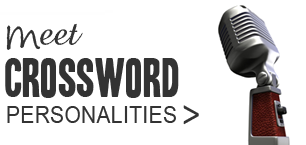
In any standard cryptic puzzle, you are likely to find a lot of charades. Around one-third of clues in daily crosswords are pure or part charade.
Charade Clue Structure: The clue contains these parts -
1. Main Definition
2. Charade Component Definitions - Definitions of the parts that make up the solution.
3. Position Indicators (optional) - These are present only if the charade components are to be rearranged in order different from that of the wordplay.
Example:
Sunday Times 4302: Member acquires friend, not improperly (7) LEG ALLY
"not improperly" is the main definition.
"Member" and "friend" are charade component definitions. Member = LEG, friend = ALLY.
They are put one after the other to give the solution, LEGALLY.
Charade Clue Characteristics
Charades are often combined with abbreviations, or bits and pieces of words (such as first/last letters).
THC 9355: Prior belted one that is ultimately right (7) EARL IE R
"Prior" is the main definition. The charade components are: belted one = EARL, that is = IE, right = R.
THC 9373: Head of attorney liberal for one making an excuse (5) A LIB I
"Excuse" is the main definition. The charade components are: "head of attorney" = the first letter of "attorney" = A, liberal = LIB, one = I.
----------------------------------
A charade could use anagrams, reversals etc. to clue its individual segments. If so, each such segment carries the associated indicator.
Charade + Anagram Example:
Guardian 24539: Baffled deer? Baffled deer (8) HIND ERED*
The first "Baffled" is the main definition. The charade components are: "deer" = HIND (the female deer), and "baffled deer" = the word DEER anagrammed, which gives ERED.
Charade + Homophone Example:
Times 24055: Appreciative when jar's topped up by speaker (8) GRATE FUL{~full}
"Appreciative" defines GRATEFUL. The charade components are: "jar"=GRATE (in the verb form), and "topped up by speaker"=something that sounds like "full", which gives FUL.
----------------------------------
Charade components need not always be placed one after the other. Where rearrangement is required to get the solution, the clue contains appropriate position indicator.
ET 3420 : Coming for the opening after seeing the publicity (6) AD VENT
The wordplay for charade components give "opening" = VENT and "publicity" = AD in that order, but "after" indicates that VENT should be placed after AD.
----------------------------------
The number of charade components can vary. Two or three components are common, but there can be more.
Here's one with four (I couldn't find a better published example, so will have to use this for now – ignore the weird surface, please!):
THC 9373 (Nita Jaggi): Quiet bird has a sign on a strange occurrence (10) P HEN OMEN ON
The charade components are: quiet = P, bird = HEN, sign = OMEN, on = ON
Related Posts:
- Other Clue Types: Anagrams, Hidden Words, Reversals, Containers,
Deletions, Double Definitions, Homophones, Substitutions,
Acrostics, Cryptic Definitions, &Lit.
If you wish to keep track of further articles on Crossword Unclued, you can subscribe to it in a reader via RSS Feed. You can also subscribe by email and have articles delivered to your inbox.








 Follow on Twitter
Follow on Twitter Join us on Facebook
Join us on Facebook Get RSS
Get RSS

13 comments
Am new to this. Why does 'quiet' equal 'P'?
This comes from indications for volume/loudness in music, in which 'p'(or piano) means 'soft' or 'quiet'. Similarly, 'f' (or forte) means 'loud' or 'strong' or 'deep'.
'pp' and 'ff' stand for the extremes : 'very soft' and 'very loud'.
p for piano - soft
pp for pianossimo - very soft
f for forte - loud
ff for fortessimo - very loud
Thanks, vck. They're spelt pianissimo and fortissimo, I believe?
Fortuitous that you commented about musical terms today. The Google logo informs me that today is Antonio Vivaldi's birthday.
How does "BELTED ONE" translate to EARL
Hi AVK, there used to be a formal public ceremony in which the king tied a sword belt around the waist of the new earl. Hence the term "belted one".
Baffled Deer? Baffled deer.
Could that not also be STAGGERED?
Hi Anonymous,
STAGGERED is close but not quite. It has 9 letters instead of the required 8, plus STAG + (DEER)* leaves a G unaccounted for.
How do i differentiate between a charade and a hidden word
For instance, Quiet bird has a sign on...... Can also be an anagram
Hi Vaibhav,
That is part of the challenge of solving cryptics. If you look at components such as 'strange', you might think that clue contains an anagram. But if you proceed on that route, you will soon reach a dead end as other components will remain unexplained. So you will have to abandon that line of parsing and try another that fits the whole clue.
It's a bit like putting a jigsaw together. Two pieces may fit, but the puzzle is complete only when all pieces fit.
Also see this post about deliberate misdirection: Of Anagrams and Whodunits.
I made a post
Choose a number having preserve fruit.
Choose = PICK
A number = fifty five = LE
Fufty = L in roman
Five = E 5th alphabet
Preserve food = PICKLE
Is is correct ?
P is for Piano, symbolizing quiet.
Used in Cryptic Crosswords, pretty frequently
P or Piano is soft not quiet
sh or mum is normally used for quiet
Post a Comment